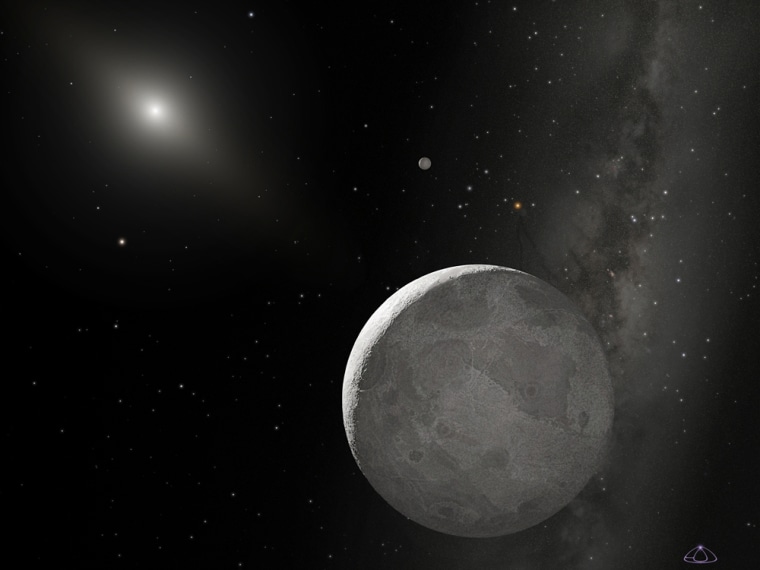An object called the 10th planet by some astronomers is not as big as previously thought.
The round world, officially catalogued as 2003 UB313, is about 1,490 miles wide with an uncertainty of 60 miles, according to new observations by the Hubble Space Telescope. Pluto is roughly 1,430 miles (2,300 kilometers) wide.
A study in February put the diameter of 2003 UB313 at roughly 1,860 miles (3,000 kilometers).
Nicknamed "Xena," 2003 UB313 was discovered last year. By many accounts it could be considered a planet. It is round and orbits the sun.
But because several other objects meet those criteria and also approach Pluto's size, astronomers have been wrangling for months over how to define the word "planet." It is not known if or when the International Astronomical Union, which rules on such things, will issue a decision. Members of an advisory board weighing the issue can't even agree on the parameters of a definition.
Since 2003 UB313 is 10 billion miles away not even as wide as the United States, it showed up as just 1.5 pixels in Hubble's view. But that's enough to precisely make a size measurement, astronomers said.
The new size estimate suggests the object is brighter than had been thought. An object's brightness hints at its surface composition. In this case, a layer of methane frost might cover the world, astronomers speculated today.
